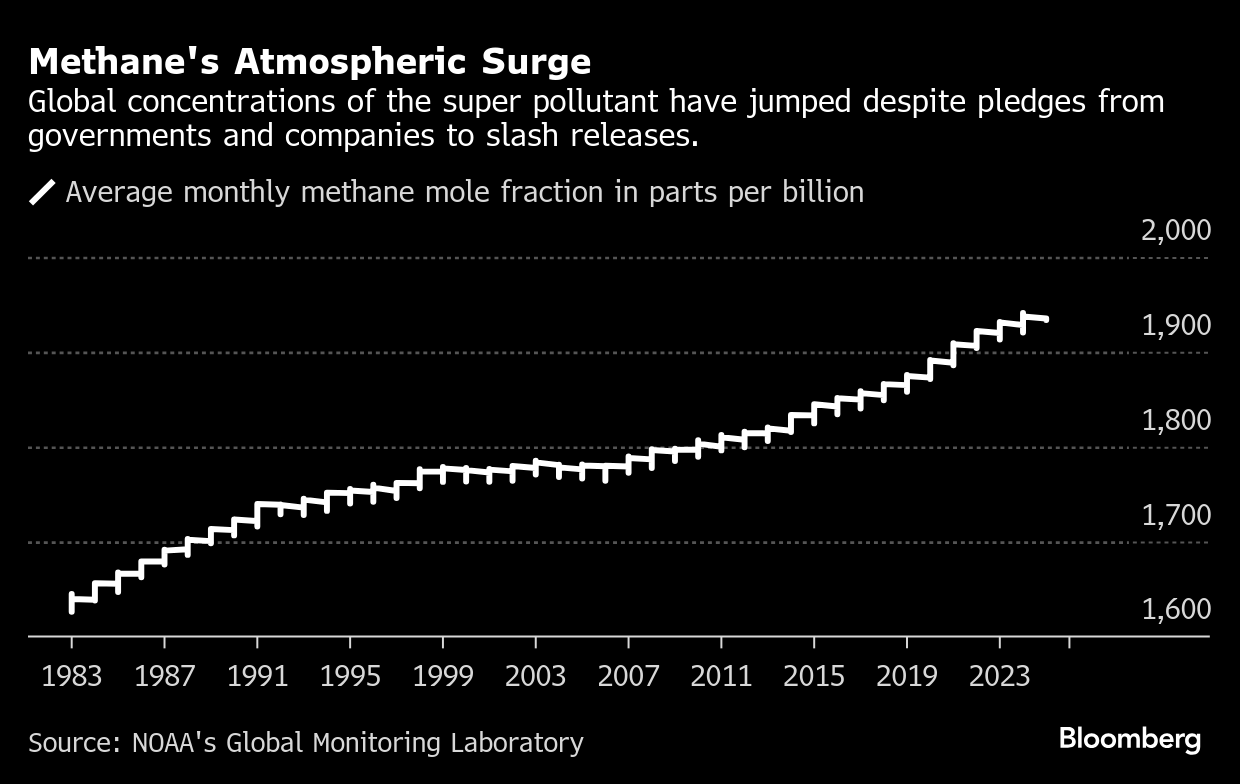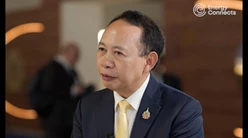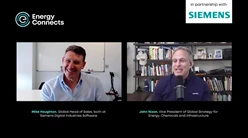Polluters Are Starting to Heed to UN Methane Warnings
(Bloomberg) -- More governments and companies are responding to United Nations-issued alerts about methane leaks, though action still remains too limited to drive major cuts to emissions of the greenhouse gas.
The response rate to pollution warnings from the UN’s International Methane Emissions Observatory jumped to 12% from 1% over the past year, the agency said Wednesday in a report. IMEO has issued more than 3,500 alerts to 33 countries since its program was launched in 2022.
Atmospheric data shows efforts to limit the releases are so far having little impact on the volume of global methane emissions, produced from sectors like oil and gas production, agriculture, landfills and from natural sources such as wetlands.

Methane pollution has accounted for about 30% of the rise in global temperatures since the Industrial Revolution. The gas has more than 80 times the warming power of carbon dioxide in the short-term, meaning tackling the releases is regarded as one of the fastest and most effective actions to limit planetary warming.
Tackling methane emissions from fossil fuel has long been viewed by scientists and policymakers as some of the lowest hanging fruit in the fight against climate change because in many cases curbing emissions simply means upgrading equipment and improving operations.
“It’s venting, flaring and other escapes from existing infrastructure where we just need to tighten a few screws in some cases and we can’t ignore those rather easy wins,” Inger Andersen, executive director of the United Nations Environment Programme, which oversees IMEO, said during a press briefing. “The world has the tools and the science to cut methane emissions and it is starting put them to use, but again, actions remain too slow to meet the climate goals.”
UNEP has confirmed 25 instances of operators cutting emissions as a result of IMEO alerts, including 19 recorded since last November. Releases have been curbed or halted in locations including Iraq, Yemen, Libya and Turkmenistan — a nation that’s been the focus of extensive efforts to encourage climate action by diplomats and environmental groups.
Some nations are doing better than others. Countries like Yemen, Argentina and Oman have achieved 100% or near 100% response rates, which has translated into major emissions cuts, according to IMEO head Giulia Ferrini. The agency has trained roughly 2,000 engineers, asset managers, regulators and policymakers from 40 countries on how to use the data.
Despite the growing momentum, more concerted action is required to meet the goal of the Global Methane Pledge, backed by about 150 nations and which aims to slash releases of the gas 30% by 2030 from 2020 levels.
Methane releases from fossil fuel production remain close to a 2019 high, according to the International Energy Agency. While additional oil and gas suppliers have made pledges to measure and reduce their emissions, those efforts currently cover only 42% of the industry’s global production, UNEP said.
IMEO also plans to expand its coverage to target methane emissions from coal mines and waste sites, the agency said in the report.
(Updates with details throughout.)
©2025 Bloomberg L.P.





